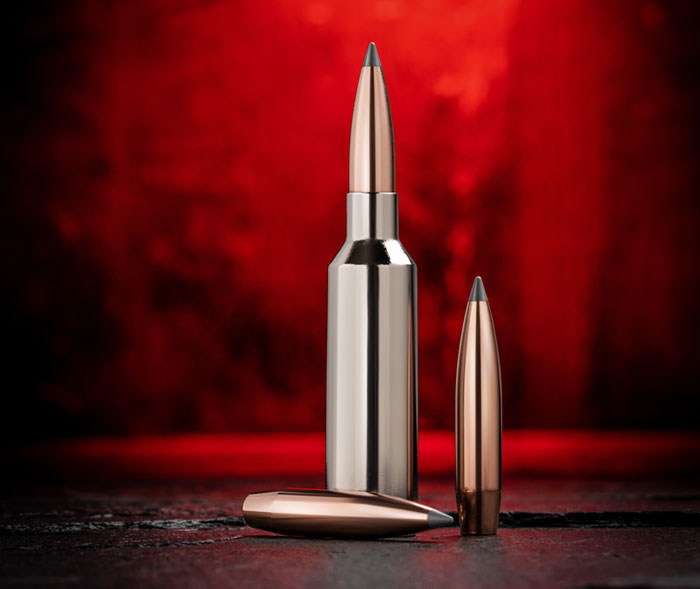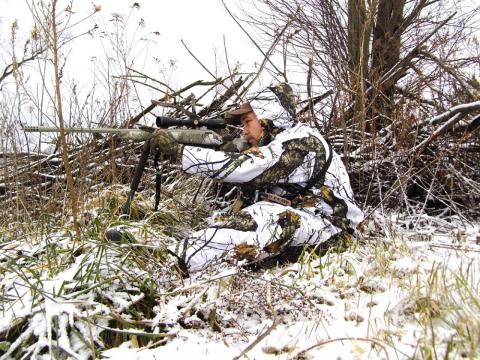William W (Bill) Gabbard

Not that many years ago, when a new caliber arrived, I thought I had to have it. Around 2001, Winchester hit the market with the 300 WSM, shortly followed by the 7MM WSM and 270 WSM. Then along came Remington with the 7MM and .300 SAUM rounds, based on their still new RUM calibers. Throw in the 30 TC along with a few more and this many new calibers coming on the scene convinced me that I couldn’t buy them all.
Most, though not all, of the writers of the day seemed to think that the 30-06, along with the 270 Winchester, 7MM Remington Magnum and 300 Winchester Magnum would be left behind by the newer, shorter, faster hot shots. The 30 TC was going to replace both the 308 and 30-06. None of this happened and except for the 300 WSM, most of the others are struggling to hang on. There are plenty of great calibers out there that just never got the wind beneath their sails to make them a commercial success. Whether the gun writers of the day never got behind them, lack of marketing, or the gun buying public just didn’t pick up on them, doesn’t make them any less capable than they really are. The 30 TC, which has never been a huge success, served as the parent case for the wildly popular 6.5 Creedmoor. The 6.5 Creedmoor proves that a new round can be a success.
This brings us to the 6.8 Western. Everything I turn to related to firearms is talking about this new cartridge. On the surface, it looks like the folks at Winchester and Browning have really had their nose to the grindstone on this one. The 270 Winchester has been a favorite since the days of Jack O’Conner. The metric designations have really gained popularity in the past few years, so the 6.8 being the metric designation for .277 caliber, it should intrigue the interest of old guys like me as well as the 6.5 Creedmoor generation.
The 6.5 Creedmoor, initially developed as a long-range target round, was picked up by hunters and pushed along by most gun writers. It excels at both, but in my opinion - I know a lot of folks disagree with me - it is somewhat lacking in terms of energy at extended ranges. The 270 WSM seemed to catch on early but the lack of bullets any heavier than 150 grains limits its use on elk-size and larger game. Before I get slammed by folks telling me that the 6.5 Creedmoor and the 270 WSM will kill everything up to and including T-Rex, I am not saying that they are not adequate for elk-sized game. I am simply of the opinion that heavier bullets are more effective in the hands of the average hunter.

On paper the 6.8 Western appears to have answered these shortfalls as well as addressing the issue of the recoil associated with the 300 magnums. The 6.8 Western begins with the case being a shortened version of the 270 WSM, which allows for longer, heavier for caliber bullets to be used. This is similar to the story of the 260 Remington in comparison to the 6.5 Creedmoor. Most 270 WSM rifles use a 1 in 10 twist rate that will have trouble stabilizing the heavier bullets. The Winchester rifles are using a 1 in 8 twist, while their Browning cousins using a 1 in 7 ½ rate. The Winchester hunting ammunition launches either a Nosler 165 gr Long Range Accubond bullet with a ballistic coefficient of .620 at 2970 fps or 170 gr Ballistic Silvertip with a BC of .563 at 2920 fps. Browning ammo is loaded with a 175gr Sierra Tipped Gameking. These rounds should “pack plenty of punch” for elk. The Browning website claims that their 175 gr load has more energy than the 6.5 Creedmoor, the 6.5 PRC, and the 7MM Rem Mag, while having less recoil than the 300 WSM, 300 Win Mag and the 300 PRC. During the development, they found out that the new round much like its parent round showed some very impressive accuracy out past 500 yds. Winchester has introduced a match load utilizing a 175 gr Hollow Point Boat-tail match bullet to accompany the hunting loads.
Interestingly, Winchester chose not to call this round “Magnum” but based on the size of the powder column and the weight of the bullets, it is definitely a magnum round. Like its parent case the 270 WSM, it is a non-belted case, which means that its headspace’s on the shoulder instead of the belt which should improve accuracy. Once reloading dies as well as these longer heavier bullets become available, reloaders will appreciate this feature, which usually results not only greater accuracy but longer case life. Early reports from other writers and videos indicate that this round has plenty of wallop for elk, bear and mule deer, and is not nearly as punishing as the bigger magnums.
Will the new 6.8 Western land the death blow to the already struggling 270 WSM, and 7MM WSM? Possible, but more likely it will just push them a little lower on the sales chart. Will it send the 7MM Remington Magnum and the 300 Winchester Magnum to obscurity? I strongly doubt it, they are simply too well entrenched to be moved out. Will it be a commercial success, or will it be like so many of the other new calibers that have hit the market with big plans, just to find that there was no demand for them? Based on all the early reviews, the 6.8 shows plenty of promise. If hunting and long-range shooters both become attached to it, the round has a good chance. Hopefully we will get our hands on one soon and give it a good workout!



























